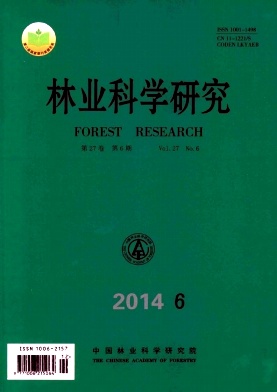|
[1]
|
褚延广,苏晓华,黄秦军,等.欧洲黑杨基因资源光合生理特征与生长的关系[J]. 林业科学,2010,46(7):77-83.
|
|
[2]
|
王振兴,朱锦懋,王 健,等. 闽楠幼树光合特性及生物量分配对光环境的响应[J]. 生态学报,2012,32(12):3841-3848.
|
|
[3]
|
邱念伟,周 峰,顾祝军,等. 5种松属树种光合功能及叶绿素快相荧光动力学特征比较[J]. 应用生态学报,2012,23(5):1181-1187.
|
|
[4]
|
姜小文, 易干军, 陶爱群, 等.四季柚净光合速率与生理生态因子间的关系[J]. 中南林学院学报,2005,25(5): 45- 48.
|
|
[5]
|
陈建华,曹 阳,闫文德,等. 板栗的光合性状[J]. 中南林学院学报,2006,26(2):72- 74.
|
|
[6]
|
张斌斌,姜为兵,韩 键,等. 桃光合性状杂种优势研究[J]. 园艺学报,2011,38(1):25-34.
|
|
[7]
|
张亚黎,姚贺盛,罗 毅,等. 海岛棉和陆地棉叶片光合能力的差异及限制因素[J].生态学报,2011,31(7): 1803-1810.
|
|
[8]
|
张耀文,王竹云,田建华,等. 甘蓝型油菜同质异核细胞质雄性不育系与其保持系的光合特性[J].中国油料作物学报,2012,34(3): 249-255.
|
|
[9]
|
王 鹏,张天真. 利用棉花海陆种间染色体片段导入系剖析光合色素含量的遗传基础[J].作物学报,2012, 38(6): 947-953.
|
|
[10]
|
江锡兵,李 博,张志毅,等.美洲黑杨与大青杨杂种无性系苗期光合特性研究[J]. 北京林业大学学报,2009,31(5):151-154.
|
|
[11]
|
周永斌,马学文,姚 鹏,等. 不同生长速度杨树品种的光合生理特性研究[J]. 沈阳农业大学学报,2007,38(3):336-339.
|
|
[12]
|
王 彬,李 宏,毕刚蕊. 俄罗斯杨和银×新杨光合日变化的研究[J]. 北方园艺,2010(17):96-99.
|
|
[13]
|
杨培林,彭 俊,钟新才. 不同水分处理下胡杨、俄罗斯杨光合特性的研究[J]. 新疆农业科学,2012,49(1):52-57.
|
|
[14]
|
张江涛,刘友全,赵蓬晖,等. 欧美杨无性系幼苗的光合生理特性比较[J]. 中南林业科技大学学报, 2007,27(4):8-22.
|
|
[15]
|
王 勇,赵 曦,沈应柏,等. 不同施氮量对 6 个黑杨新无性系光合特性的影响[J].西北农业学报,2010,19(3):168-173.
|
|
[16]
|
张守仁,高荣孚. 光胁迫下杂种杨无性系光合生理生态特性的研究[J]. 植物生态学报,2000,24(5):528-533.
|
|
[17]
|
张守仁,高荣孚,王连军. 杂种杨无性系的光系统Ⅱ放氧活性、光合色素及叶绿体超微结构对光胁迫的响应[J].植物生态学报,2004,28(2):143-149.
|
|
[18]
|
杨敏生,李艳华,梁海永,等. 白杨派杂种无性系及其亲本光合和生长对盐胁迫的反应[J]. 林业科学,2006,42(4):19-26.
|
|
[19]
|
汤玉喜,刘友全,吴 敏,等. 淹水胁迫下美洲黑杨无性系生理生化指标的变化[J].中国农学通报,2008,24(8):156-161.
|
|
[20]
|
江锡兵,宋跃朋,马开峰,等.低温胁迫下美洲黑杨与大青杨杂种无性系若干生理指标变化研究[J]. 北京林业大学学报,2012,34(1):59-63.
|
|
[21]
|
刘海涛,张川红,郑勇奇,等.抗虫转基因欧洲黑杨苗期光合特性研究[J]. 北京林业大学学报,2011,33(1):36-43.
|
|
[22]
|
尹 吴,李丽莎,王立科,等. 转玉米 PEPC 基因杨树的光合生理特性分析[J].林业科学,2012,48(6):65-71.
|
|
[23]
|
李文文,黄秦军,丁昌俊,等. 南方型和北方型美洲黑杨幼苗光合作用的日季节变化[J].林业科学研究,2010,23(2):227-233.
|
|
[24]
|
Wang R Z, Gao Q. Photosynthesis, transpiration and water use efficiency in two divergent Leymus chinensis populations from northeast China[J]. Photosynthetica, 2001, 39: 123-126. |
|
[25]
|
叶子飘,于 强. 一个光合作用光响应新模型与传统模型的比较[J]. 沈阳农业大学学报,2007,38(6):771-775.
|
|
[26]
|
聂乐兴,姜兴印,吴淑华,等.胺鲜酯对高产夏玉米产量及叶片光合羧化酶和保护酶活性的影响[J]. 应用生态学报,2010,21(10): 2558-2564.
|
|
[27]
|
Lilley R, Walker D. An improved spectrophotometric assay for ribulosebisphosphate carboxylase[J].Biochimica et biophysica Acta, 1974, 358:226-229. |
|
[28]
|
Fujimoto R, Taylor J M, Shirasawa S. et al,. Heterosis of Arabidopsis hybrids between C24 and Col is associated with increased photosynthesis capacity[J]. Proceedings of the National Academy of Sciences of the United States of America, 2012, 109(18):7109-7114. |
|
[29]
|
郑殿君,张治安,姜丽艳,等. 不同产量水平大豆叶片净光合速率的比较[J].东北林业大学学报,2010,41(9):1-5.
|
|
[30]
|
陈展宇,徐克章,吴 磊,等.旱作条件下旱稻和水稻叶片光合特性及RuBP羧化酶活的比较[J]. 西北农林科技大学学报:自然科学版,2012,40(5):87-98.
|
|
[31]
|
林植芳,李双顺,林桂珠. 叶片气孔的分布与光合途径[J]. 植物学报,1986,28(4):387-395.
|
|
[32]
|
马书荣,阎秀峰,陈柏林. 不同海拔裂叶沙参和泡沙参气孔形态的对比研究[J]. 东北林业大学学报,1999,27(6):94-97.
|
|
[33]
|
Kelly G J,Latzko E.Requlatory aspects of photosynthetic carbon metabolism[J]. Ann Rev Plant Physiol,1976(27):181-205. |
|
[34]
|
杨兴洪,邹 琦,赵世杰.遮荫和全光生长的棉花光合作用和叶绿素荧光特征[J]. 植物生态学报,2005,29(1):8-15.
|





 DownLoad:
DownLoad: